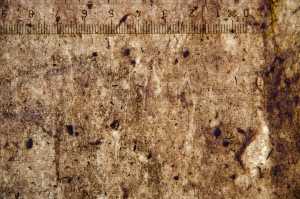Specifications
| Title | Study of a Sleeping Shepherd |
|---|---|
| Material and technique | Black chalk, heightened with white, on yellow-brown prepared paper |
| Object type |
Drawing
> Two-dimensional object
> Art object
|
| Location | This object is in storage |
| Dimensions |
Height 196 mm Width 374 mm |
|---|---|
| Artists |
Draughtsman:
Jacopo Bassano (Jacopo da Ponte)
|
| Accession number | I 52 (PK) |
| Credits | Loan Stichting Museum Boijmans Van Beuningen (former Koenigs collection), 1940 |
| Department | Drawings & Prints |
| Acquisition date | 1940 |
| Creation date | in circa 1555-1560 |
| Watermark | poorly visible, unidentifiable, possibly Crown (ca. 40 x 34 mm, upright, upside down, lying to left or right, on P3 of 14P). [see image] |
| Inscriptions | 'B.B. no:24' (verso, top centre, pen and brown ink) |
| Collector | Collector / Franz Koenigs |
| Mark | Z. Sagredo (L.2103a) inv. B.B. no:24, F.W. Koenigs (L.1023a) |
| Provenance | Zaccaria Sagredo (1653-1729, L.2103a, inv. 'B.B.no:24' in dorso), Venice; - ; Franz W. Koenigs (1881-1941, L.1023a), Haarlem, acquired in 1927; D.G. van Beuningen (1877-1955), Rotterdam, acquired with the Koenigs Collection in 1940 and donated to Stichting Museum Boijmans Van Beuningen |
| Exhibitions | Venice/Florence 1985, no. 31; Rotterdam 2010 (coll 2 kw 6) |
| Internal exhibitions |
De Collectie Twee - wissel VI, Prenten & Tekeningen (2010) |
| Research |
Show research Italian Drawings 1400-1600 |
| Literature | Tietze/Tietze-Conrat 1944, no. 149 (Jacopo Bassano), Arslan 1960, no. I 367 (Francesco Bassano), Aikema/Meijer 1985, no. 31, ill. (Jacopo Bassano) |
| Material | |
| Object | |
| Technique |
Highlight
> Painting technique
> Technique
> Material and technique
|
| Geographical origin | Italy > Southern Europe > Europe |
| Place of manufacture | Venice > Veneto region > Italy > Southern Europe > Europe |
Do you have corrections or additional information about this work? Please, send us a message
























